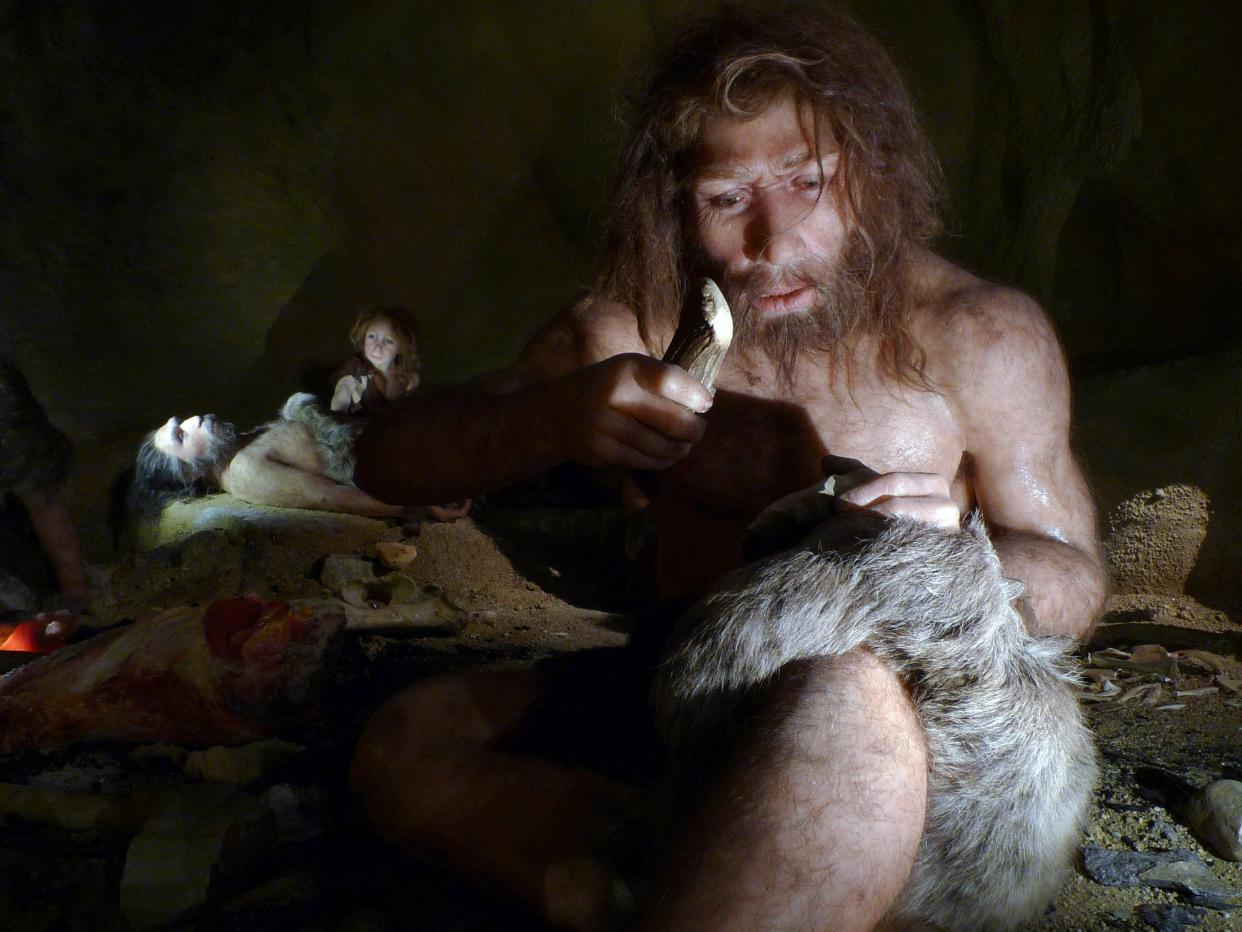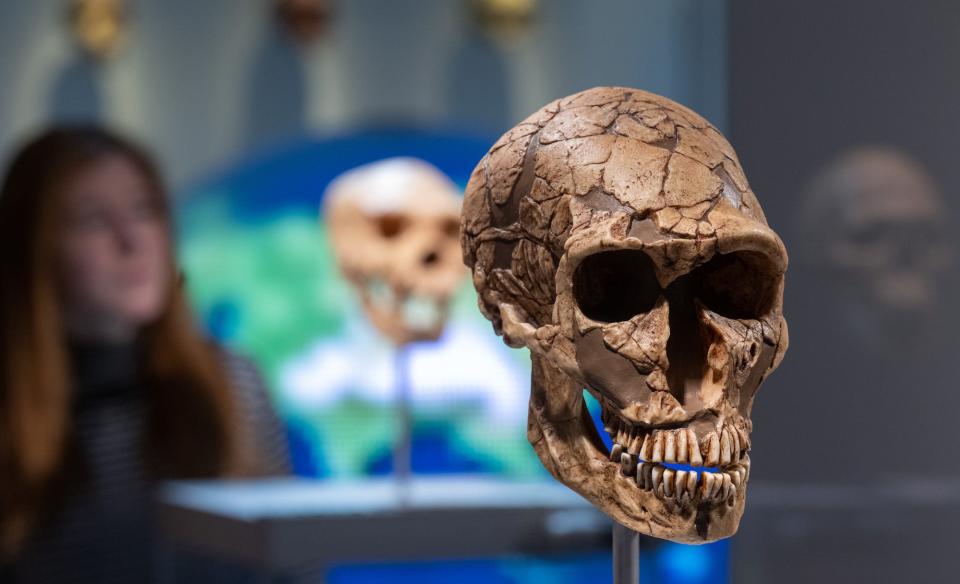Scientists discovered 50,000-year-old viruses in Neanderthal DNA that could help explain their mysterious extinction

Neanderthals may have caught the same viruses that cause modern colds, cold sores, and some cancers.
It's possible ancient humans introduced these unfamiliar viruses to their relatives.
Understanding these ancient viruses may shed light on Neanderthals' extinction and modern diseases.
Neanderthals may have suffered from some very familiar diseases 50,000 years ago, which could have contributed to their downfall.
Researchers studying ancient Neanderthal DNA found traces of three viruses that cause colds, cold sores, genital warts, and cancer.
And ancient humans might have been the ones who started spreading these bugs, according to the scientists who recently published their work in the peer-reviewed journal "Viruses."
Most Neanderthal experts think the species went extinct due to various causes, from changing climate to low fertility rates to human interactions. Trying to recover from illnesses — especially unfamiliar ones introduced by distant cousins — likely wouldn't have helped.
Poor health from "these types of infections can have a negative impact when you are competing with another species," Marcelo Briones, one of the researchers who found the viruses, told Business Insider via email.
Not only could these ancient viruses contribute to our understanding of Neanderthals' extinction, but they might help us learn more about the modern versions still infecting humans today.
Siberian bones with ancient viruses

About 54,000 years ago, a small community of Neanderthals lived in Chagyrskaya Cave in Southern Siberia.
Briones and his colleagues studied the sequenced DNA data of two Neanderthals from the cave — an adult male and a boy — to look for evidence of three viruses they thought might have contributed to the species' extinction: adenovirus, herpesvirus, and papillomavirus.
The adenovirus can cause respiratory infections like colds or flu, while herpesviruses can cause cold sores or genital warts, depending on the type. Some cancers, like cervical cancer, are linked to the papillomavirus.
This isn't the first time researchers have found inert (no longer infectious) ancient human viruses. A 2021 study documented the discovery of adenovirus in 31,600-year-old human teeth from Siberia.
The adenovirus, herpesvirus, and papillomavirus found in this more-recent study are nearly 50,000 years old, according to the researchers — 20,000 years older than the adenovirus found in the Siberian teeth.
That's around the time some experts estimate humans and Neanderthals interbred, between 60,000 and 50,000 years ago. In addition to swapping DNA, humans and Neanderthals probably passed around diseases.
It's not clear if newly introduced viruses would have caused the same symptoms in Neanderthals that they do in present-day humans. While infections likely induced an immune response, it's difficult to tell how severe resulting illnesses would have been, Briones said.
One 2016 study suggested interbreeding with Neanderthals may have boosted humans' immunity to previously unknown diseases. However, the Neanderthals may have been less lucky.
"A cold does not have to be fatal to decrease hunting efficiency or reproductive ability," Briones said. With an already small population, getting sick with new illnesses might have contributed to Neanderthals' extinction roughly 40,000 years ago.
The difficulty with ancient DNA
Learning more about how these ancient diseases have changed over tens of thousands of years could shed light on how they affect modern humans.
Some viruses never leave your body. "They have a huge impact on human health because they are long-lived infections," said Sasha Tabachnikova, a PhD candidate studying herpesvirus at Yale School of Medicine. Recent research has linked Epstein-Barr — a type of herpesvirus — with multiple sclerosis, for example.
Tabachnikova, who wasn't involved in the paper, is excited about the possibility of studying how an ancient virus has evolved since the Neanderthals' era. But that type of research is likely a ways off.
Ancient DNA is tricky to work with. It degrades and breaks into short fragments. The longer a sequence of DNA is, the easier it is to identify.
"When the sequence is too short, you will find them everywhere, in all types of genomes," Diyendo Massilani, an assistant professor of genetics at Yale, said. That can lead to misinterpretations in the data.
Viruses already have shorter DNA strands than humans do. That means tools used to study ancient human DNA might not work for viruses, Sally Wasef, a paleogenetics researcher at Queensland University of Technology, told New Scientist.
Massilani also had some concerns with how the researchers were interpreting the ancient DNA. "They probably have a good idea," he said, but they need to adjust some of their methods to strengthen their results.
Briones said he and his colleagues plan to do more research to confirm their findings.
Read the original article on Business Insider

